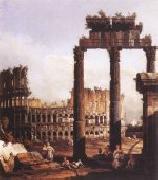 |
Bernardo Bellotto -- Click Here
|
|
Italian Rococo Era Painter, C.1721-1780
Italian painter and draughtsman. He was a view painter who worked in Italy and later at the courts of Dresden, Vienna, Munich and Warsaw. The nephew and almost certainly the pupil of Canaletto, outside Italy he signed his works de Canaletto and hence became known as Canaletto. He painted both topographical and imaginary views in a style independent of his uncle's, distinguished by cold colour and by the austere geometry of architectural masses. |
|
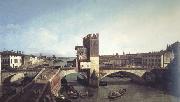 |
Bernardo Bellotoo -- Click Here
|
|
Italian Rococo Era Painter, ca.1721-1780 |
|
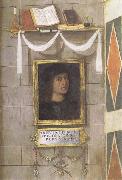 |
Bernardino Pinturicchio -- Click Here
|
|
c.1452-1513.Italian painter. He collaborated with Perugino in 1481-2 in the Sistine Chapel, Rome, and quickly established his reputation as a painter of distinctive and picturesque decorative cycles. His most important commissions included the decoration (1492-4) of the Borgia Apartments in the Vatican Palace, Rome, for Pope Alexander VI and the large fresco cycle (1502-1507/8) in the library of Siena Cathedral, depicting the Life of Aeneas Silvius Piccolomini |
|
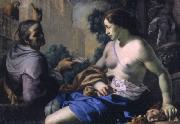 |
Bernardino Mei -- Click Here
|
|
(1612/15 - 1676) worked in a Baroque manner in his native Siena and in Rome, finding patronage above all in the Chigi family.
Briefly a pupil of the Sienese draughtsman and cartographer Giuliano Periccioli, where he learned the art of engraving, Bernardino passed to the studio of the painter Rutilio Manetti and probably also served in the workshop of Francesco Rustici.
He painted in and around Siena, where his work came to the attention of Cardinal Fabio Chigi, who, once elected pope as Alexander VII (1655), called Bernardino Mei to Rome in 1657. There Bernardino came under the influences of Mattia Preti, Andrea Sacchi and Pier Francesco Mola, and of Guercino, to the extent that until the 20th century Bernardino's fresco of Aurora in Palazzo Bianchi Bandinelli was attributed to Guercino himself. Through the fast friendship that bonded him to Gian Lorenzo Bernini, whose studio he frequented, he applied that sculptor's sense of theatrical action to his own mythological and allegorical subjects. He died in Rome in 1676.
|
|
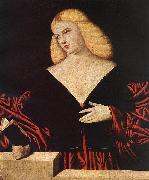 |
Bernardino Licinio -- Click Here
|
|
(c. 1489 - 1565) was an Italian High Renaissance painter of Venice and Lombardy. Born in Poscante (Bergamo). He mainly painted portraits and religious canvases.
|
|
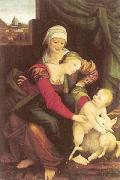 |
Bernardino Lanino -- Click Here
|
|
(1512 -1583 ) - Painter
|
|
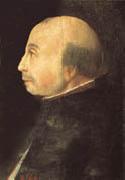 |
Bernardino india -- Click Here
|
|
Italian Emilian painter , 1528-1590
was a painter of the late Renaissance, born and mainly active in Verona. He is said to have trained with Domenico Riccio. He collaborated with Michele Sanmicheli in the Canossa palace and Pellegrini chapel in San Bernardino of Verona. He collaborated with Felipe Brusasorci, Domenico's son in frescoes at Palazzo Fiorio Della Seta. He decorated Palladian villas such as Villa Pojana, Villa Foscari (also known as La Malcontenta) where Giovanni Battista Zelotti also worked, and the Palazzo Thiene in Vicenza. Orlando Flacco completed his most extensive work for the Sala Maggior di Consiglio in Verona. |
|
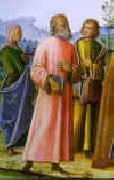 |
Bernardino Fungai -- Click Here
|
|
Italian
1460-1516
Italian painter. He is recorded in 1482 as Benvenuto di Giovanni garzone at work on the monochrome frescoes decorating the drum of the cupola of Siena Cathedral. Most scholars have accepted Benvenuto as Fungai teacher but stress the greater influence of Matteo di Giovanni; other proposals have included Giovanni di Paolo and, following the reattribution of paintings traditionally ascribed to Giacomo Pacchiarotti, Pietro Orioli. Fungai depended heavily on the preceding generation of Sienese painters and was considerably influenced by the contemporary activity of Pietro Perugino, Luca Signorelli and Bernardino Pinturicchio in and around Siena. His works are characterized by the docility of the figures, a keen decorative sensibility in the use of colour and the treatment of drapery and landscape, and a pleasantly engaging narrative skill. Although identification of works from his early career is problematic, a sizeable oeuvre has been ascribed on the basis of a signed and dated altarpiece executed for S Niccole al Carmine depicting the Virgin and Child Enthroned with SS Sebastian, Jerome, Nicholas and Anthony of Padua (1512; Siena, Pin. N.).
|
|
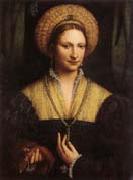 |
Bernardini Luini -- Click Here
|
|
Italian High Renaissance Painter, ca.1480-1532 |
|
|
|
Bernard, Emile -- Click Here
|
|
French, 1868-1941
French painter and writer. He was the son of a cloth merchant. Relations with his parents were never harmonious, and in 1884, against his father's wishes, he enrolled as a student at the Atelier Cormon in Paris. There he became a close friend of Louis Anquetin and Toulouse-Lautrec. In suburban views of Asni?res, where his parents lived, Bernard experimented with Impressionist and then Pointillist colour theory, in direct opposition to his master's academic teaching; an argument with Fernand Cormon led to his expulsion from the studio in 1886. He made a walking tour of Normandy and Brittany that year, drawn to Gothic architecture and the simplicity of the carved Breton calvaries. In Concarneau he struck up a friendship with Claude-Emile Schuffenecker and met Gauguin briefly in Pont-Aven. |
|
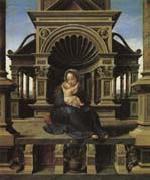 |
Bernard van orley -- Click Here
|
|
Flemish Northern Renaissance Painter , c.1488-1551
|
|
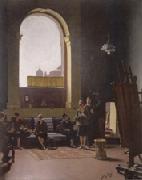 |
Bernard Hall -- Click Here
|
|
Artist, teacher, Director of Melbourne??s National Gallery and Felton Bequest advisor
English-born Australian, 1859-1935
was an English-born Australian artist. Hall was born at Liverpool, England. The son of a Liverpool broker of the same family as Captain Basil Hall, writer of books of travel, he was well educated and grew up in an atmosphere of culture. He studied painting at South Kensington, Antwerp and Munich, and worked for some to years in London. He exhibited at the Royal Academy and was one of the original members of the New English Art Club. On the death of George Frederick Folingsby in 1891 he was appointed director of the National Gallery of Victoria at Melbourne, and began his duties in March 1892. He held the position for 43 years aria many of the well-known painters of Australia were trained by him in the gallery painting school. He also acted as adviser to the trustees for purchases for the gallery and art museum, and when the munificent bequest of Alfred Felton was received his responsibilities were much increased. In 1905 he went to England to make purchases under this bequest, and although the amount then placed in his hands was comparatively small, he made better use of what was available than any subsequent adviser of his time. After his return he was expected to advise on everything submitted that might find a place in an art museum and, although he never claimed to be an expert in all these things, he supplemented his knowledge with hard reading and made cornparatively few mistakes. Hall's own paintings were usually interiors, nudes, or paintings of still life. He was often represented at the Victorian Artists' and other societies' exhibitions and held several one-man shows, but he was kept so busily employed as director and adviser, that his paintings had to be done at week ends and during vacations. In February 1934 he again went to London as adviser to the Felton trustees and died there on 14 February 1935. He was married twice in 1894 to Miss E. M. Shuter and in 1912 to Miss G. H. Thomson, who with one son by the first marriage and two sons and a daughter by the second marriage, survived him. Hall was a tall man of distinguished appearance, courteous but slightly austere in manner, with strong convictions, and little sense of compromise. He was extremely conservative in almost everything from his art to his politics. |
|
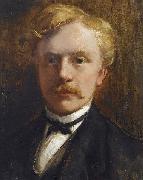 |
Bernard Blommers -- Click Here
|
|
(30 January 1845 in The Hague - 12 December 1914 in The Hague) was a Dutch etcher and painter of the Hague School.
He learned lithography early in his career, and then studied at the Hague Akademie under Johan Philip Koelman until 1868.His early paintings were mostly genre works depicting fishermen and their wives, heavily influenced by Jozef Israëls.The later works (from about 1890) are more loosely painted, although maritime and genre scenes remained the primary subject matter. His work was critically successful during his lifetime, being sought after by English, Scottish and American collectors.
|
|
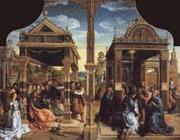 |
Bernaert Van Orley -- Click Here
|
|
Flemish Northern Renaissance Painter, ca.1488-1541, Painter and tapestry designer, son of Valentin van Orley. He was one of the greatest proponents of ROMANISM, a northern style based on the ideals of the Italian Renaissance. It must have been in Brussels, however, that he saw the Italian works of art that influenced him so profoundly, for it seems unlikely that he ever travelled to Italy. Brussels was then world-renowned as the centre for tapestry manufacture but was suffering from the ecliptic rise of Antwerp as the pre-eminent painting centre. The artist made the best of both situations, establishing himself as a leading designer for the Brussels tapestry industry and as a master in the Antwerp Guild of St Luke by 1517. |
|
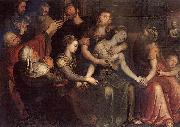 |
Bernaert de Ryckere -- Click Here
|
|
Bernaert de Rijckere (c1535, Kortrijk - 1590, Antwerp), was a Flemish Renaissance painter.
According to Karel van Mander he was born in Kortrijk and was admired there for an altarpiece depicting Christ bearing the cross, which he made for the St. Marten's church of the brothers of the Cross there. He later took on a different style that Karel van Mander had heard of but had not seen to be able to judge it for himself. He said he moved to Antwerp and joined the Guild of St. Luke there in 1561.
According to the Netherlands Institute for Art History he was the teacher of his son, the painter Abraham de Rijcke, and is known for landscapes and historical allegories. |
|
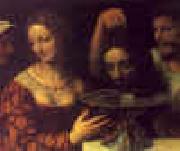 |
Bernadino Luini -- Click Here
|
|
Italian
c1481-1532
Bernadino Luini Gallery |
|
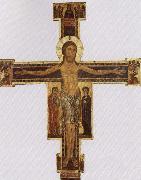 |
Berlinghiero Berlinghieri -- Click Here
|
|
Italian painter
c.1175/1180-pre-1236
|
|
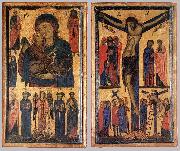 |
BERLINGHIERI, Bonaventura -- Click Here
|
|
Italian Gothic Era Painter, active 1215-1242
Italian painter. Originally from Lucca, he was the most gifted of a family of Lombardian painters. His Scenes from the Life of St. Francis on the predella of the altar of San Francesco (Pescia) is the earliest known visual representation of St. Francis' life. Also noted are Scenes from the Life of St. Francis (Santa Croce, Florence) and St. Francis Receiving the Stigmata (Accademia, Florence). |
|
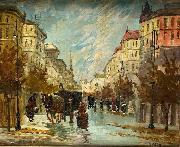 |
Berkes Antal -- Click Here
|
|
(1874-1938) was a Hungarian painter, born in Budapest, Hungary. Lived in Paris for some time and produced cityscapes there as well as similar street scenes of Budapest and Vienna.
He studied at The Academy of Fine Arts between 1889-1894 in Budapest, Hungary. He first started painting landscapes, and later changed to painting street scenes of Budapest. His popularity and sales increased so he started "mass producing" many of his works, meeting the requirements of the art dealers of his age. His work went through light and dark periods as he experimented with light.
|
|
 |
Bergognone -- Click Here
|
|
active in Milan 1481-1522 |
|
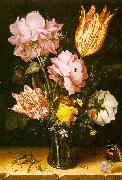 |
Berghe, Christoffel van den -- Click Here
|
|
Dutch, approx. 1590-1645 |
|
|
|
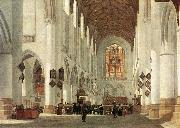 |
BERCKHEYDE, Job Adriaensz -- Click Here
|
|
Dutch painter (b. 1630, Haarlem, d. 1693, Haarlem).
He was apprenticed on 2 November 1644 to Jacob Willemsz. de Wet, whose influence is apparent in his first dated canvas, Christ Preaching to the Children (1661; Schwerin, Staatl. Mus.), one of the few biblical scenes in his oeuvre. On 10 June 1653 he repaid a loan from the Haarlem Guild of St Luke, which he subsequently joined on 10 March 1654. During his stay in Heidelberg, Job painted portraits and hunting scenes at the court of the Elector Palatine, who rewarded him with a gold chain, perhaps the one he wears in his early Self-portrait (c. 1655; Haarlem, Frans Halsmus.), his only documented work from the 1650s. Job is better known for his later work, which consists mainly of interior views of St Bavo's church in Haarlem and simple genre scenes recalling those of his Haarlem contemporaries Adriaen van Ostade and Jan Steen.
|
|
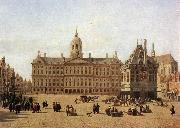 |
BERCKHEYDE, Gerrit Adriaensz. -- Click Here
|
|
Dutch Baroque Era Painter, 1638-1698
Brother of Job Berckheyde. Gerrit specialized in a particular type of architectural subject, the TOWNSCAPE. His painted work shows a debt not only to Pieter Saenredam's conception of the building portrait but also to Saenredam's refined draughtsmanship and dispassionate attitude; these qualities mark Berckheyde as a classicist and akin to Vermeer. Berckheyde favoured views of monuments on large open squares, a choice that distinguishes him from the other great Dutch townscape painter, Jan van der Heyden, who preferred views along canals in which clarity was sacrificed for pictorial effect. |
|
 |
BERCHEM, Nicolaes -- Click Here
|
|
Dutch Baroque Era Painter, 1620-1683
Nicolaes Pieterszoon Berchem (1 October 1620 - 18 February 1683) was a highly esteemed and prolific Dutch painter of pastoral landscapes, populated with mythological or biblical figures, but also of a number allegories and genre pieces.
Born in Haarlem, he received instruction from his father Pieter Claesz, and from the painters Jan van Goyen, Jan Wils and Claes Cornelisz. Moeyaert. (It is not known why he called himself Berchem or Berighem, and other variants). For some time it was supposed Berchem traveled to Italy with a fellow painter Jan Baptist Weenix, whom he called his cousin. In 1645 he became a member of the Dutch reformed church and married the year after. Being a widower he married the daughter of Jan Wils. Around 1650 he did travel to Westphalia with Jacob van Ruisdael. May be Berchem went to Italy after this trip and before he moved to Amsterdam. Around 1660 he worked for the engraver Jan de Visscher designing an atlas. In 1670 he moved back to Haarlem, but Berchem died in Amsterdam in 1683.
His paintings, of which he produced an immense number, (Hofstede de Groot claimed around 850, although many are misattributed), were in great demand, as were his 80 etchings and 500 drawings. His landscapes, painted in the Italian style of idealized rural scenes, with hills, mountains, cliffs and trees in a golden dawn are sought after. Berchem also painted inspired and attractive human and animal figures in works of other artists, like Allaert van Everdingen, Jan Hackaert, Gerrit Dou, Meindert Hobbema and Willem Schellinks. The French Rococo painter Jean-Baptiste Pillement was influenced by his works. |
|
|
|
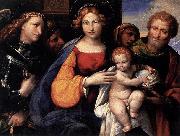 |
Benvenuto Tisi -- Click Here
|
|
(1481 - September 6, 1559) was a Late-Renaissance-Mannerist Italian painter of the School of Ferrara. Garofalo's career began attached to the court of the Duke d'Este. His early works have been described as "idyllic", but they often conform to the elaborate conceits favored by the artistically refined Ferrarese court.
Born in Ferrara, Tisi is claimed to have apprenticed under Panetti and perhaps Costa and was a contemporary, and sometimes collaborator with Dosso Dossi. In 1495 he worked at Cremona under Boccaccino, who initiated him into Venetian colouring. He may have spent three years (1509 - 1512), in Rome. This led to a stylized classical style, more influenced by Giulio Romano.
Invited by a Ferrarese gentleman, Geronimo Sagrato, to Rome, he worked briefly under Raphael in the decoration of the Stanza della Segnatura. From Rome family affairs recalled him to Ferrara; there Duke Alfonso I commissioned him to execute paintings, along with the Dossi, in the Delizia di Belriguardo and in other palaces. Thus the style of Tisi partakes of the Lombard, the Roman and the Venetian modes.
He painted extensively in Ferrara, both in oil and in fresco, two of his principal works being the "Massacre of the Innocents" (1519), in the church of S. Francesco, and his masterpiece "Betrayal of Christ" (1524). For the former he made clay models for study and a clay figure. He continued constantly at work until in 1550 blindness overtook him, painting on all feast-days in monasteries for the love of God. He had married at the age forty-eight, and died at Ferrara on the 6th (or 16th) of September 1559, leaving two children.
Garofalo combined sacred inventions with some very familiar details. A certain archaism of style, with a strong glow of colour, suffices to distinguish from the true method of Raphael even those pictures in which he most closely resembles the great masterthis sometimes very closely; but the work of Garofalo is seldom free from a certain trim pettiness of feeling and manner.
|
|
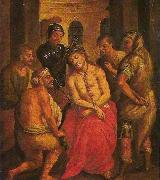 |
Bento Jose Rufino Capinam -- Click Here
|
|
painted Christ Wearing the Crown of Thorns in 1791-1874 |
|
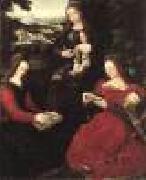 |
BENSON, Ambrosius -- Click Here
|
|
Flemish Northern Renaissance Painter, ca.1495-1550
South Netherlandish painter of Italian birth. In 1518 he acquired Bruges citizenship, and in 1519 he was admitted to the guild of painters and saddlemakers there as an independent master, with the comment that he was 'from Lombardy'. He may have been from Ferrara, although he was originally called Ambrogio Benzone, taking his first name from the patron saint of Milan, the capital of Lombardy. He was probably attracted to Bruges by its commercial and artistic reputation. Initially he worked in the studio of Gerard David, by whom he was profoundly influenced, but after a few months the relationship went wrong and the younger painter brought a case against David. Benson's first marriage was to Anna Ghyselin, who bore him two sons, Willem Benson (1521/2-1574) and Jan Benson (before 1530-before 1581), both of whom became artists. From his second marriage, to Josyne Michiels, a daughter Anna was born, and he had two other daughters from various extra-marital relationships. Benson was an affluent and successful man: he owned several houses, for one of which he gave eight paintings in half payment (which gives some idea of the value of his works at the time). Benson twice received commissions from city magistrates to decorate their new county hall and was a member of the city council on three occasions; he also held important offices within the painters' guild, including dean (1537-8 and 1543-4) and governor (1540-41). His pupils included his two sons, and Joachim Spaers (1541) and Jacob Vinson (Fynson; 1549). |
|
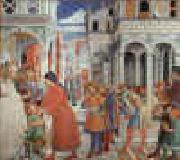 |
Benozzo Gozzoli -- Click Here
|
|
Italian Early Renaissance Painter, 1420-1497
Italian Renaissance painter. Early in his career he assisted Lorenzo Ghiberti on the east doors of the Baptistery in Florence and Fra Angelico on frescoes in Florence, Rome, and Orvieto. His reputation today rests on the breathtaking fresco cycle The Journey of the Magi (1459 ?C 61) in the chapel of Florence's Medici-Riccardi Palace. His work as a whole was undistinguished, however. He painted several altarpieces and a series of 25 frescoes of Old Testament scenes, now badly damaged, for the Camposanto in Pisa (1468 ?C 84).
|
|
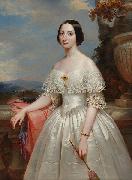 |
Benoit Hermogaste Molin -- Click Here
|
|
painted Painting of Maria Adelaide, wife of Victor Emmanuel II, King of Italy in 1848 |
|
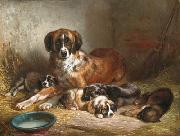 |
Benno Adam -- Click Here
|
|
(July 15, 1812, Munich - March 9, 1892, Kehlheim) was a German painter.
He specialised in animal portraits and market and hunting scenes.
He was the son of painter Albrecht Adam.
|
|
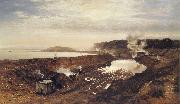 |
Benjamin Williams Leader -- Click Here
|
|
British Painter, 1831-1923
was an English artist. Born in Worcester as Benjamin Leader Williams, he was the son of civil engineer Edward Leader Williams (who was also a keen amateur artist and friend of John Constable) and Quaker Sarah Whiting. His brother, also called Edward Leader Williams, followed in his father's footsteps and became a notable civil engineer. The family lived in Worcester at Diglis House. Williams Leader was educated at the Royal Grammar School Worcester and then the Royal Academy Schools. He immediately became successful as an artist and first exhibited his work at the Royal Academy in 1854. Since that year until his death in 1923 his paintings were hung in every summer exhibition at the Royal Academy. He was knighted as Chevalier of the Legion of Honour by the French in 1889 and was created a full member of the Royal Academy in 1898 (RA - Royal Academician). In 1914 he was given the Freedom of the City of Worcester in recognition of his services (as a director of Royal Worcester Porcerlain and a native of the city). Famous paintings include February Fill Dyke and Autumn's Last Gleam. His paintings were bought by King George V and William Gladstone amongst others, and he became one of the most popular and expensive artists of his day. His works received popular approval for their verisimilitude, and the fame of February Fill Dyke, facilitated by an etching, spread to London, Paris, and the United States. |
|
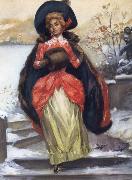 |
Benjamin West Clinedinst -- Click Here
|
|
Illustrator and Painter.
American , 1859-1931
was an American illustrator and painter, born at Woodstock, Va. He studied for a year in Baltimore and for five years in Paris under Cabanel and Bonnat and first attracted attention in New York with his illustrations for Leslie's Weekly. He was best known as the illustrator of Thomas Nelson Page's Unc' Edinburg, the works of Hawthorne, Stevenson, and Mark Twain, although he worked also in oils and water colors. His sympathetic collaboration with the author gave his work an especial charm. He was awarded the Evans prize of the American Water-Color Society in 1900. In 1947. |
|
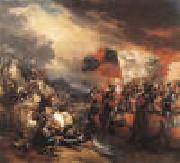 |
Benjamin West -- Click Here
|
|
1738-1820
Benjamin West Locations
Benjamin West RA (October 10, 1738 ?C March 11, 1820) was an Anglo-American painter of historical scenes around and after the time of the American War of Independence. He was the second president of the Royal Academy serving from 1792 to 1805 and 1806 to 1820.
In 1760, sponsored by Smith and William Allen, reputed to be the wealthiest man in Philadelphia, West traveled to Italy where he expanded his repertoire by copying the works of Italian painters such as Titian and Raphael.
As painted by Gilbert Stuart, 1783-84West was a close friend of Benjamin Franklin, whose portrait he painted. Franklin was also the godfather of West's second son, Benjamin.
In 1763, West moved to England, where he was commissioned by King George III to create portraits of members of the royal family. The king himself was twice painted by him. He painted his most famous, and possibly most influential painting, The Death of General Wolfe, in 1770, exhibited at the Royal Academy in 1771. Although originally snubbed by Sir Joshua Reynolds, the famous portrait painter and President of the Royal Academy, and others as over ambitious, the painting became one of the most frequently reproduced images of the period.
In 1772, King George appointed him historical painter to the court at an annual fee of £1,000. With Reynolds, West founded the Royal Academy of Arts in 1768. He was the second president of the Royal Academy from 1792 to 1805. He was re-elected in 1806 and was president until his death in 1820. He was Surveyor of the King's Pictures from 1791 until his death. Many American artists studied under him in London, including Charles Willson Peale, Rembrandt Peale, Gilbert Stuart, John Trumbull, and Thomas Sully. [3]
West is known for his large scale history paintings, which use expressive figures, colours and compositional schemes to help the spectator to identify with the scene represented. West called this "epic representation".
He died in London. |
|
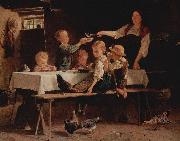 |
Benjamin Vautier -- Click Here
|
|
painted Kinder beim Mittagessen in 1857 |
|
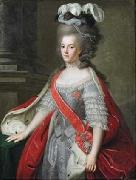 |
Benjamin Samuel Bolomey -- Click Here
|
|
painted Portrait of Wilhelmina of Prussia (1751-1820), Princess of Orange in 18th century
|
|
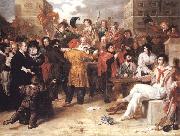 |
Benjamin Robert Haydon -- Click Here
|
|
English Romantic Painter, 1786-1846
1786-1846.was an English historical painter and writer. Haydon was born at Plymouth. His mother was the daughter of the Rev. Benjamin Cobley, rector of Dodbrooke, near Kingsbridge, Devon. Her brother, General Sir Thomas Cobley, was renowned for his part in the siege of Ismail. Benjamin's father, a prosperous printer, stationer and publisher, was well known in Plymouth. Haydon, an only son, at an early date showed an aptitude for study, which was carefully fostered by his mother. At the age of six he was placed in Plymouth grammar school, and at twelve in Plympton St Mary School, the same school where Sir Joshua Reynolds had received most of his education. On the ceiling of the school-room was a sketch by Reynolds in burnt cork, which Haydon loved to sit and look at. Whilst at school he had some thought of adopting the medical profession, but he was so shocked at the sight of an operation that he gave up the idea. Reading Albinus inspired him with a love for anatomy; but from childhood he had wanted to become a painter. Full of energy and hope, he left home, on 14 May 1804, for London, and entered the Royal Academy as a student. He was so enthusiastic that Henry Fuseli asked when he ever found time to eat. Aged twenty-one (1807) Haydon exhibited, for the first time, at the Royal Academy, The Repose in Egypt, which was bought by Thomas Hope the year after for the Egyptian Room at his townhouse in Duchess Street. This was a good start for the young artist, who shortly received a commission from Lord Mulgrave and an introduction to Sir George Beaumont. In 1809 he finished his well-known picture of Dentatus, which, though it increased his fame, resulted in a lifelong quarrel with the Royal Academy, whose committee had hung it in a small side-room instead of the great hall. That same year, he took on his first pupil, Charles Lock Eastlake, later destined to become one of the great figures of the British art establishment. In 1810 his financial difficulties began when the allowance of £200 a year from his father was stopped. His disappointment was embittered by the controversies in which he now became involved with Beaumont, for whom he had painted his picture of Macbeth, and Richard Payne Knight, who had denied the beauties as well as the money value of the Elgin Marbles. |
|
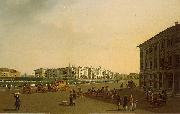 |
Benjamin Patersen -- Click Here
|
|
painted Saint Petersburg in 1801 |
|
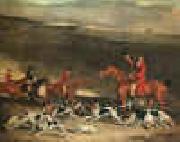 |
Benjamin Marshall -- Click Here
|
|
1767-1835
British
Benjamin Marshall Gallery
was an English sporting and animal painter. He was a follower of George Stubbs and studied under Lemuel Abbott for a short period of time. After 1792, he began painting animals, settling at Newmarket in 1812 near the racetrack. He returned to London in 1825 and died in 1835. |
|
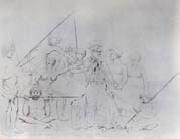 |
Benjamin Duterrau -- Click Here
|
|
1767 - 1851 , was an artist in England and in early colonial Australia. Duterrau was was born in London to parents of French descent. Duterrau was apprenticed to an engraver and in 1790 did two coloured stipple engravings after Morland, The Farmer's Door and The Squire's Door. Taking up painting, between 1817 and 1823 he exhibited six portraits at Royal Academy exhibitions, and he also exhibited three genre pieces at the British Institution about the same period. Duterrau emigrated to Van Diemen's Land (now Tasmania), arriving in August 1832 with his daughter. He lived at the corner of Campbell and Patrick Streets in Hobart, and practised as a portrait painter. In 1835 he did some etchings of Indigenous Australians, the first examples of that craft to be done in Australia. His most famous painting The Conciliation is in the Hobart gallery with a self-portrait and other works, including some modelling in relief. A large landscape is in the Beattie collection at Launceston, and he is also represented in the Dixson collection at Sydney. Duterrau died at Hobart in 1851. |
|
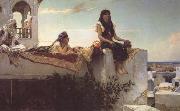 |
Benjamin Constant -- Click Here
|
|
1767-1830
French-Swiss novelist and political writer. He had a tumultuous 12-year relationship with Germaine de Staël, whose views influenced him to support the French Revolution and subsequently to oppose Napoleon, for which he was exiled (1803 C 14). He later served in the Chamber of Deputies (1819 C 30). Adolphe (1816) was a forerunner of the modern psychological novel. |
|
 |
Benjamin Champney -- Click Here
|
|
(November 20, 1817 - December 11, 1907) was a painter whose name has become synonymous with White Mountain art of the 19th century. He began his training as a lithographer under celebrated marine artist Fitz Henry Lane at Pendleton's Lithography shop in Boston. Most art historians consider him the founder of the "North Conway Colony" of painters who came to North Conway, New Hampshire and the surrounding area during the second half of the 19th century. His paintings were often used to make chromolithographs that were subsequently sold to tourists who could not afford Champney's originals. He exhibited regularly at the Boston Athenæum and was a founder of the Boston Art Club
|
|
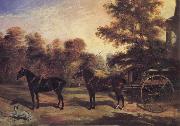 |
Benjamin Cam Norton -- Click Here
|
|
British, 1835-1900 |
|
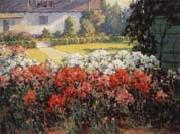 |
Benjamin C.Brown -- Click Here
|
|
American,is best remembered for his Impressionist renderings of the Sierra Mountains and poppy-filled spring meadows.1865-1942 |
|
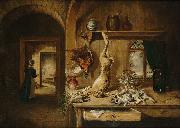 |
Benjamin Blake -- Click Here
|
|
United Kingdom (1757- 1830 ) - Painter
painted Still life of game in a larder in 1830 |
|
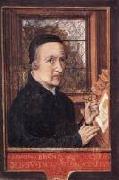 |
BENING, Simon -- Click Here
|
|
Flemish Northern Renaissance Manuscript Illuminator, ca.1483-1561
Simon Bening (1483?C1561) was a 16th century miniature painter of the Ghent-Bruges school, the last major artist of the Netherlandish tradition.
Bening was trained in his father Alexander Bening's miniature painting workshop in Ghent. He made his own name after moving to Bruges. His specialty was the book of hours, but by his time these were becoming relatively unfashionable, and only produced for royalty and the very rich. He also created genealogical tables and portable altarpieces on parchment. Many of his finest works are Labours of the Months for Books of Hours which are largely small scale landscapes, at that time a nascent genre of painting. In other respects his style is relatively little developed beyond that of the years before his birth, but his landscapes serve as a link between the 15th century illuminators and Peter Brueghel. His self-portrait and other portraits equally are early examples of the portrait miniature. He served as dean of the calligraphers, booksellers, illuminators, and bookbinders in the Guild of Saint John and Saint Luke.
He created books for German rulers, like Cardinal Albrecht of Brandenburg, and royalty like Emperor Charles V and Don Fernando, the Infante of Portugal.
The artistic tradition continued in his family. His eldest daughter, Levina Teerlinc, became a miniature painter, mostly of portrait miniatures and another daughter became a dealer in paintings, miniatures, parchment, and silk. |
|
|
|
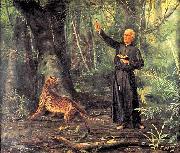 |
Benedito Calixto -- Click Here
|
|
(14 October 1853 -- 31 May 1927) was a Brazilian painter. His works usually depicted figures from Brazil and Brazilian culture, including a famous portrait of the bandeirante Domingos Jorge Velho in 1923, and scenes from the coastline of São Paulo. Unlike many artists of the time, Calixto's patron was an individual other than the state, who were "the most dependable source of patronage." |
|
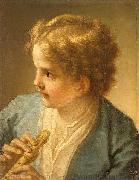 |
Benedetto Luti -- Click Here
|
|
Benedetto Luti (17 November 1666 - 17 June 1724) was an Italian painter.
Luti was born in Florence. He moved to Rome in 1691 where he was patronized by Cosimo III de' Medici, Grand Duke of Tuscany, an enthusiast for the pastel portrait. Luti was one of the first artists to work in pastels as the final composition as opposed to initial studies for paintings or frescoes. He also worked in oils and painted frescoes for the Basilica di San Giovanni in Laterano.
Luti was also a successful art dealer and ran a school of drawing; among his pupils were Giovanni Domenico Piastrini, Giovanni Paolo Panini, Claude Arnulphy, Jean-Baptiste van Loo, William Kent. |
|
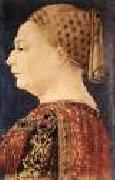 |
BEMBO, Bonifazio -- Click Here
|
|
Italian Painter, active 1444-1477 |
|
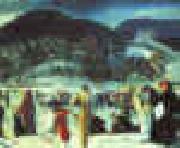 |
Bellows, George -- Click Here
|
|
American, 1882-1925.American painter and lithographer. He was the son of George Bellows, an architect and building contractor. He displayed a talent for drawing and for athletics at an early age. In 1901 he entered Ohio State University, where he contributed drawings to the school yearbook and played on both the basketball and baseball teams. In spring of his third year he withdrew from university to play semi-professional baseball until the end of summer 1904; |
|
 |
BELLOTTO, Bernardo -- Click Here
|
|
Italian Rococo Era Painter, ca.1721-1780
Bernardo Bellotto (30 January 1720 ?C 17 October 1780) was an Italian urban landscape painter or vedutista, and printmaker in etching famous for his vedutes of European cities (Dresden, Vienna, Turin and Warsaw). He was the pupil and nephew of Canaletto and sometimes used the latter's illustrious name, signing himself as Bernardo Canaletto ?? fraudulently, according to some. Especially in Germany, paintings attributed to Canaletto may actually be by Bellotto rather than by his uncle; in Poland, they are by Bellotto, who is known there as "Canaletto".
Bellotto's style was characterized by elaborate representation of architectural and natural vistas, and by the specific quality of each place's lighting. It is plausible that Bellotto, and other Venetian masters of vedute, may have used the camera obscura in order to achieve superior precision of urban views. |
|
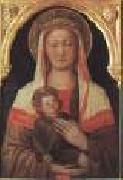 |
BELLINI, Jacopo -- Click Here
|
|
Italian Gothic Era Painter, ca.1400-1470
Born in Venice, Jacopo had been a pupil of Gentile da Fabriano. In 1411-1412 he was in Foligno, where with Gentile he worked at the Palazzo Trinci frescoes. In 1423 Bellini was in Florence, where he knew the new works by Brunelleschi, Donatello and Masaccio.
In 1424 he opened a workshop in Venice, which he ran right up until his death.
Many of his greatest works, including the enormous Crucifixion in the cathedral of Verona (1436), have disappeared. From c. 1430 is the panel with Madonna and Child, in the Accademia Carrara, once attributed to Gentile da Fabriano. In 1441, at Ferrara, where he was at the service of Leonello d'Este together with Leon Battista Alberti, he executed a portrait of that Marquess, now lost. Of this period the Madonna dell'Umilt??, probably commissioned by one of the brothers of Leonello.
The influence from Masolino da Panicale towards more modern, early Renaissance themes is visible in the Madonna with Child (dated 1448) in the Pinacoteca di Brera: for the first time, perspective is present and the figure are more monumental. Later he contributed with works now lost to the Venetian churches of San Giovanni Evangelista (1452) and St. Mark (1466). From 1459 is a Madonna with Blessing Child in the Gallerie dell'Accademia.
Later he sojourned in Padua, where he trained a young Andrea Mantegna in perspective and classicist themes and where, in 1460, he finished a portrait of Erasmo Gattamelata, now lost. Of his late phase, a ruined Crucifix in the Museum of Verona and an Annunciation in Sant'Alessandro of Brescia remain. |
|
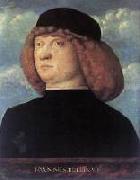 |
BELLINI, Giovanni -- Click Here
|
|
Italian High Renaissance Painter, ca.1430-1516
Giovanni Bellini (c. 1430 ?C 1516) was an Italian Renaissance painter, probably the best known of the Bellini family of Venetian painters. His father was Jacopo Bellini, his brother was Gentile Bellini, and his brother-in-law was Andrea Mantegna. He is considered to have revolutionized Venetian painting, moving it towards a more sensuous and colouristic style. Through the use of clear, slow-drying oil paints, Giovanni created deep, rich tints and detailed shadings. His sumptuous coloring and fluent, atmospheric landscapes had a great effect on the Venetian painting school, especially on his pupils Giorgione and Titian. |
|
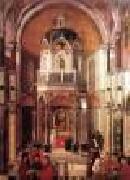 |
BELLINI, Gentile -- Click Here
|
|
Italian Early Renaissance Painter, ca.1429-1507
Gentile was born into a family of renowned painters: his father Jacopo Bellini, was a Venetian pioneer in the use of oil paint as an artistic medium; his acclaimed brother was Giovanni Bellini, and his brother-in-law Andrea Mantegna. Gentile was taught painting in the workshop of his father. Although today Gentile is often seen in the shadow of his more famous family members, in his own time he was considered among the greatest living painters in Venice and had no shortage of commissions; his talent as a portraitist revealed itself at an early age. |
|
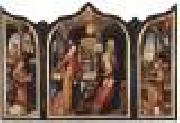 |
BELLEGAMBE, Jean -- Click Here
|
|
Flemish painter (c. 1480 - c. 1535)
South Netherlandish painter and designer. His father, George Bellegambe, a cabinetmaker and musician, was a prominent citizen of Douai. Jean is first mentioned in a document of 1504, when he is referred to as a master painter, a burgher and married. His teacher is unknown, but his work bears some imprint of the art of Jan Provoost, who inherited Simon Marmion's studio. However, Bellegambe might equally have been apprenticed in Bruges or Brussels (possibly in the atelier of the Master of the Legend of St Mary Magdalen, for example), or even in Antwerp. The calm and serenity of Bellegambe's compositions, his treatment of landscape, his lightness of technique, his pursuit of clear, soft colours and delicate harmonies all indicate links with the work of Gerard David and Quinten Metsys. In the 17th century Bellegambe was known as 'the Master of Colours'. |
|
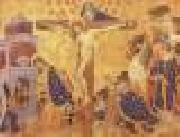 |
BELLE-CHOSE, Henri -- Click Here
|
|
Flemish Gothic Era Painter, active ca.1415-1440
South Netherlandish painter. He was one of the artists who came from the South Netherlands to work for the French royal family. On 23 May 1415 he succeeded Jean Malouel as court painter and Valet de Chambre to John the Fearless, Duke of Burgundy, in Dijon, and he may already have been connected with Malouel's workshop. On 5 November 1415 Bellechose was paid for painting four small wooden pillars with angels, which were placed around the high altar of Notre-Dame, Dijon. On 19 May 1416 the duke authorized the purchase of materials for Bellechose to complete two panels, one of the Martyrdom of St Denis and another showing the Death of the Virgin, for the Charterhouse of Champmol. Bellechose also carried out decorative work, including painting banners for the Duke's castle of Talant near Dijon in 1416 and coats of arms for the funeral of John the Fearless in 1419. On 5 April 1420 Bellechose was appointed court painter to Philip the Good, successor to John the Fearless. His first known commissions were again of a decorative nature, including work for the funerals of Margaret of Bavaria, wife of John the Fearless, in 1423 and of Catherine of Burgundy, daughter of an earlier Duke of Burgundy, Philip the Bold, in 1425 and for the marriage of Philip the Good's sister Agnes of Burgundy in 1424. During these years he had eight assistants and two apprentices; travelling artists, including some from German territory, also worked in his shop on a temporary basis. Around this time he married Alixant Lebon, daughter of a Dijon notary. On 21 November 1425 Philip the Good ordered an altarpiece of the Virgin venerated by John the Fearless and Philip the Good, accompanied by SS John the Evangelist and Claude, for the chapel of the castle at Saulx-le-Duc in Burgundy. Bellechose painted three statues for the new entrance gate to the palace in Dijon in 1426. In August 1429 he received an important commission for St Michel, Dijon, to make an altarpiece with Christ and the Twelve Apostles and an antependium showing the Annunciation. Exactly a year later his name appears for the last time in the ducal accounts. |
|
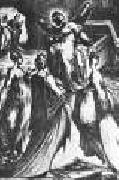 |
BELLANGE, Jacques -- Click Here
|
|
French Painter, ca.1575-1616
Jacques Bellange (c. 1575, place unknown - 1616) was an artist and printmaker from Lorraine, now in France, whose etchings and some drawings are his only securely identified works today. They are among the most striking Mannerist old master prints.
His known artistic activity dates only from 1602 to 1616 and he is now familiar chiefly for his etchings and drawings, all his decorative works and most of his paintings having perished. His highly idiosyncratic style was inspired by such Italian artists as Parmigianino, by the School of Fontainebleau and by northern artists including Albrecht D?rer and Bartholomeus Spranger. His work would seem to express a private and nervous religious sensibility through a style of the greatest refinement. |
|
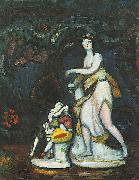 |
Bela Ivanyi-Grunwald -- Click Here
|
|
(6 May 1867 - 24 September 1940) was a Hungarian painter, a leading member of the Nagybenya artists' colony and founder of the Kecskemet artists' colony.
Born in Som, Ivenyi-Grenwald began his artistic studies under Bertalan Szekely and Keroly Lotz at the Academy of Fine Arts in Budapest (1882-86) and continued them at Munich in 1886-87 and at the Academie Julian in Paris from 1887 to 1890. From 1891 he again worked in Munich; in 1894 he travelled with Ferenc Eisenhut to Egypt, where he painted several oriental-themed works. Beginning in 1889 he had regular exhibitions at the Palace of Art in Budapest. Characteristic of his early pictures is A Hader kardja ("The Warrior's Sword", 1890), a proto-Symbolist treatment of rural genre showing the influence of Jules Bastien-Lepage. After his return to Munich, Ivenyi-Grenwald painted a large-scale genre painting entitled Nihilistek sorsot heznak ("Nihilists Drawing Lots", 1893), a work as notable for its dramatic use of chiaroscuro as for its deeply felt subject-matter. In response to a state commission for the 1896 Millennium Exhibition in Budapest he produced an enormous academic history painting. |
|
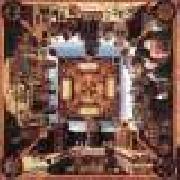 |
BEHAM, Hans Sebald -- Click Here
|
|
German Northern Renaissance Engraver, 1500-1550
Hans Sebald Beham (1500 ?C 1550) was a German printmaker who did his best work as an engraver, and was also a designer of woodcuts and a painter and miniaturist. He is one of the most important of the "Little Masters", the group of German artists making old master prints in the generation after Durer.
Beham is best known as a prolific printmaker, producing approximately 252 engravings, 18 etchings and 1500 woodcuts, including woodcut book illustrations. He worked extensively on tiny, highly detailed, engravings, many as small as postage stamps, placing him in the German printmaking school known as the "Little Masters" from the size of their prints. These works he produced and published himself, whilst his much larger woodcuts were mostly commissioned work. The engravings found a ready market among German bourgeois collectors, but were not much seen in Italy. He also made prints for use as playing cards, wallpaper, coats of arms, and designs for other artists, including many designs for stained or painted glass. He also illuminated two prayer books and painted a table top (now in the Louvre ) for Cardinal Albrecht, Archbishop of Mainz. |
|
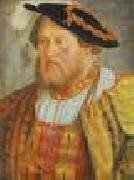 |
BEHAM, Barthel -- Click Here
|
|
German Northern Renaissance Engraver, 1502-1540
Barthel Beham or Bartel (1502 ?C 1540) was a German engraver, miniaturist and painter.
The younger brother of Hans Sebald Beham, he was born into a family of artists in Nuremberg. Learning his art from his elder brother, and Albrecht Durer, he was particularly active as an engraver during the 1520s, creating tiny works of magnificent detail, positioning him in the German printmaking school known as the "Little Masters". He was also fascinated with antiquity and may have worked with Marcantonio Raimondi in Bologna and Rome at some time in his career.
In 1525, along with his brother and Georg Pencz, the so-called "godless painters", he was banished from Lutheran Nuremberg for asserting his disbelief in baptism, Christ, or transubstantiation. Although later pardoned, he moved to Catholic Munich to work for the Bavarian dukes William IV and Ludwig X. Whilst there, his exceptional talent established him as one of Germany's principal portrait painters, favoured by distinguished patrons such as Emperor Charles V.
According to Joachim von Sandrart, he died in Italy during a trip under the patronage of Duke William. |
|
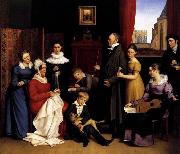 |
BEGAS, Carl the Elder -- Click Here
|
|
German painter
b. 1794, Hainsberg bei Aachen, d. 1854, Berlin |
|
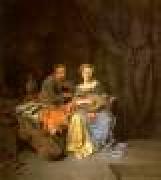 |
BEGA, Cornelis -- Click Here
|
|
Dutch Baroque Era Painter, ca.1620-1664
Dutch painter, draughtsman and etcher. He was born into prosperous circumstances; his mother, Maria Cornelis, inherited half the estate (gold, silver, paintings, drawings and prints) and all of the red chalk drawings of her father, Cornelis Cornelisz. van Haarlem, a renowned Mannerist artist. Bega's father was Pieter Jansz. Begijn (d 1648), a gold- and silversmith. Like other family members, Bega was probably Catholic. Houbraken's claim that Bega studied with Adriaen van Ostade is likely to be correct; this was probably before 24 April 1653, when Bega joined Vincent Laurentsz. van der Vinne in Frankfurt for a journey through Germany, Switzerland and France. Bega had returned to Haarlem by 1 September 1654, at which time he joined the Guild of St Luke. |
|
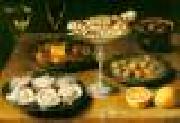 |
BEERT, Osias -- Click Here
|
|
Flemish Baroque Era Painter, ca.1580-1624
Flemish painter. In 1596 he went to study with Andries van Baseroo and in 1602 became a master in the Antwerp Guild of St Luke; these two dates suggest his probable date of birth. Beert married Marguerite Ykens on 8 January 1606. Contemporary documents describe him as a cork merchant. The esteem enjoyed by Beert is indicated by the large number of pupils he had, including, in 1610, Frans van der Borch; in 1615, Frans Ykens; in 1616, Paulus Pontius; and, in 1618, Jan Willemssen. Beert's son, Osias Beert the younger (1622-78), was also a painter and became a master in 1645. |
|
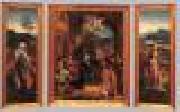 |
BEER, Jan de -- Click Here
|
|
Netherlandish Painter, ca.1475-1528
South Netherlandish painter and draughtsman. He is first mentioned in 1490 in the register of the Antwerp Guild of St Luke, apprenticed to the painter Gillis van Everen ( fl 1477-1513). In 1504 de Beer became a master. He subsequently served as alderman of the guild in 1509 and dean in 1515, although he found himself temperamentally unsuited to the position of dean, as is known from a lawsuit he filed in 1519 regarding guild administration. This document also reveals that de Beer participated in the preparations for Charles V's 'Joyous Entry' into Antwerp in 1515 and for the Antwerp Society of Rhetoricians' entry that year in the Malines landjuweel (regional competition of the rhetoricians). In 1510 and 1513 de Beer enrolled apprentices; his son Aert de Beer (c. 1509-before 6 Aug 1540) became an Antwerp master in 1529. The artist is undocumented between 1519 and 1528, by which date he was dead. In 1567 Guicciardini included de Beer in his list of famous Netherlandish painters. |
|
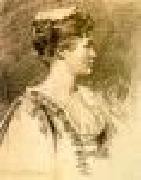 |
Beckwith James Carroll -- Click Here
|
|
American, 1852-1917
was an American portrait painter. He was born at Hannibal, Missouri, on 23 September 1852. He studied in the National Academy of Design, New York City, of which he afterwards became a member, and in Paris (1873-1878) under Carolus Duran. Returning to the United States in 1878, he gradually became a prominent figure in American art. He took an active part in the formation of The Fine Arts Society, and was president of the National Free Art League, which attempted to secure the repeal of the American duty on works of art. Among his portraits are those of William Merritt Chase (1882), Miss Jordan (1883), Mark Twain, Thomas Allibone Janvier, John Schofield and William Walton. He taught at the Art Students League of New York -- where Violet Oakley was one of his students |
|
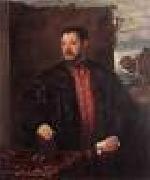 |
BECCARUZZI, Francesco -- Click Here
|
|
Italian painter, Treviso school (b. ca. 1492, Conegliano, d. before 1563, Treviso)
Francesco Beccaruzzi (c. 1492 - 1562) was an Italian painter of the Renaissance era, active near his hometown of Conegliano and in the neighborhood of Treviso. He was influenced by both Il Pordenone and later Titian. He painted Saint Francis receiving stigmata (1545) from Conegliano, but now in the Accademia in Venice. |
|
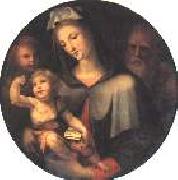 |
BECCAFUMI, Domenico -- Click Here
|
|
Italian Mannerist Painter, ca.1486-1551
Domenico was born in Montaperti, near Siena, the son of Giacomo di Pace, a peasant who worked on the estate of Lorenzo Beccafumi. Seeing his talent for drawing, Lorenzo adopted him, and commended him to learn painting from Mechero, a lesser Sienese artist.[1] In 1509 he traveled to Rome, but soon returned to Siena, and while the Roman forays of two Sienese artists of roughly his generation (Il Sodoma and Peruzzi) had imbued them with elements of the Umbrian-Florentine Classical style, Beccafumi's style remains, in striking ways, provincial. In Siena, he painted religious pieces for churches and of mythological decorations for private patrons, only mildly influenced by the gestured Mannerist trends dominating the neighboring Florentine school. There are medieval eccentricities, sometimes phantasmagoric, superfluous emotional detail and a misty non-linear, often jagged quality to his drawings, with primal tonality to his coloration that separates him from the classic Roman masters. |
|
 |
Beaux, Cecilia -- Click Here
|
|
Studied under Bouguereau and Tony Robert-Fleury. Specializes in Portraits. American Painter, 1855-1942. American painter. She began her career painting on porcelain and producing lithographs and portrait drawings. She studied with Catharine Ann Drinker (1871), Francis Adolf van der Wielen (1872-3) and Camille Piton (1879), at the Pennsylvania Academy of the Fine Arts in Philadelphia (1877-8), and privately with William Sartain (1881-3). Under Sartain's guidance, she learnt to paint, producing her first major portrait, the Last Days of Infancy |
|
 |
Beardsley Limner -- Click Here
|
|
American Colonial Era Painter, active 1785-1805 |
|
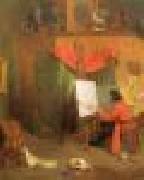 |
Beard, William Holbrook -- Click Here
|
|
American Painter, 1824-1900 |
|
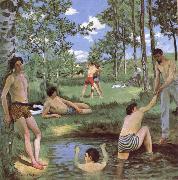 |
Bazille, Frdric -- Click Here
|
|
Studied under Charles Gleyre.
French Impressionist Painter, 1841-1870
|
|
|
|
Bayeu, Ramn -- Click Here
|
|
Spanish Painter, 1746-1793 |
|
|
|
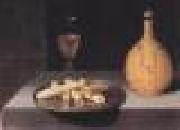 |
BAUGIN, Lubin -- Click Here
|
|
French painter. He became a master in the painters' guild of Saint-Germain-des-Pr?s in 1629. From c. 1636 he was in Italy, but he is known to have been in Paris again in 1641; in 1645 he became a member of the Acad?mie de St Luc, and in 1651 he was also a member of the Acad?mie Royale after the temporary amalgamation of the two institutions. Like many of his generation he was deeply influenced by the art of the Fontainebleau school. The Mannerist tendency of his style
|
|
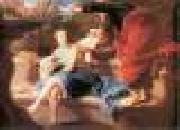 |
BATONI, Pompeo -- Click Here
|
|
Italian Rococo Era Painter, 1708-1787
He was born in Lucca, the son of a goldsmith, Paolino Batoni. He moved to Rome in 1727, and apprenticed with Agostino Masucci, Sebastiano Conca and/or Francesco Imperiale (1679-1740).
By the early 1740s, however, he started to receive independent commissions. In 1741, he was inducted into the Accademia di San Luca. His celebrated painting, The Ecstasy of Saint Catherine of Siena (1743) illustrates his academic refinement of the late-Baroque style. Another masterpiece, his Fall of Simon Magus was painted initially for the St Peter's Basilica.
Batoni became a highly-fashionable painter in Rome, particularly after his rival, the proto-neoclassicist Anton Raphael Mengs, departed for Spain in 1761. Batoni befriended Winckelmann and, like him, aimed in his painting to the restrained classicism of painters from earlier centuries, such as Raphael and Poussin, rather than to the work of the Venetian artists then in vogue.
He was greatly in demand for portraits, particularly by the British traveling through Rome , who took pleasure in commissioning standing portraits set in the milieu of antiquities, ruins, and works of art. There are records of over 200 portraits by Batoni of visiting British patrons . Such "Grand Tour" portraits by Batoni came to proliferate in the British private collections, thus ensuring the genre's popularity in the United Kingdom, where Sir Joshua Reynolds would become its leading practitioner. In 1760, the painter Benjamin West, while visiting Rome would complain that Italian artists "talked of nothing, looked at nothing but the works of Pompeo Batoni".
In 1769, the double portrait of Joseph II and Leopold II won an Austrian nobility for Batoni. He also portrayed Pope Pius VI. According to a rumor, he bequeathed his palette and brushes to Jacques-Louis David. |
|
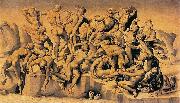 |
Bastiano da Sangallo -- Click Here
|
|
(1481 - May 31, 1551) was an Italian sculptor and painter of the Renaissance period, active mainly in Tuscany. He was a nephew of Giuliano da Sangallo and Antonio da Sangallo the Elder. He is usually known as Aristotile, a nickname he received from his air of sententious gravity. He was at first a pupil of Perugino, but afterwards became a follower of Michelangelo. Mentioned by Vasari as one who made a small copy of the Cartoon of Michelangelo Battle of Cascina (1506).
|
|
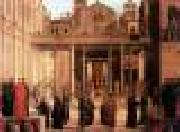 |
BASTIANI, Lazzaro -- Click Here
|
|
Italian painter, Venetian school (b. 1449, Venezia, d. 1512, Venezia)
Italian painter. He is first recorded in 1449, as a painter in Venice and in 1460 he was paid for an altarpiece in S Samuele there. Although no extant work is securely documented, several are signed and two are dated. The influence of Andrea del Castagno is clear in his early works, of the 1460s: the signed mosaic of St Sergius (Venice, S Marco), the Archangel Gabriel (Padua, Mus. Civ.) and the signed Piet? (Venice, S Antonino). Also assigned to this period are the Adoration of the Magi (New York, Frick), the polyptych of St Francis (Matera, S Francesco), the St Jerome. |
|
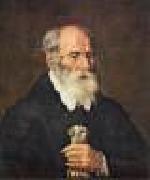 |
BASSETTI, Marcantonio -- Click Here
|
|
Italian painter, Veronese school (b. 1588, Verona, d. 1630, Verona)
Italian painter. He was a pupil of Felice Brusasorci (Ridolfi), but he soon moved to Venice, where he studied the art of Jacopo Tintoretto in particular, but also that of Jacopo Bassano and of Veronese, whose works he copied in chiaroscuro drawings (mainly Windsor Castle, Royal Lib.) similar to those of Domenico Tintoretto. Bassetti's early painted Portrait of a Man with a Glove (Verona, Castelvecchio) is essentially Venetian, close to the art of Bassano. |
|
|